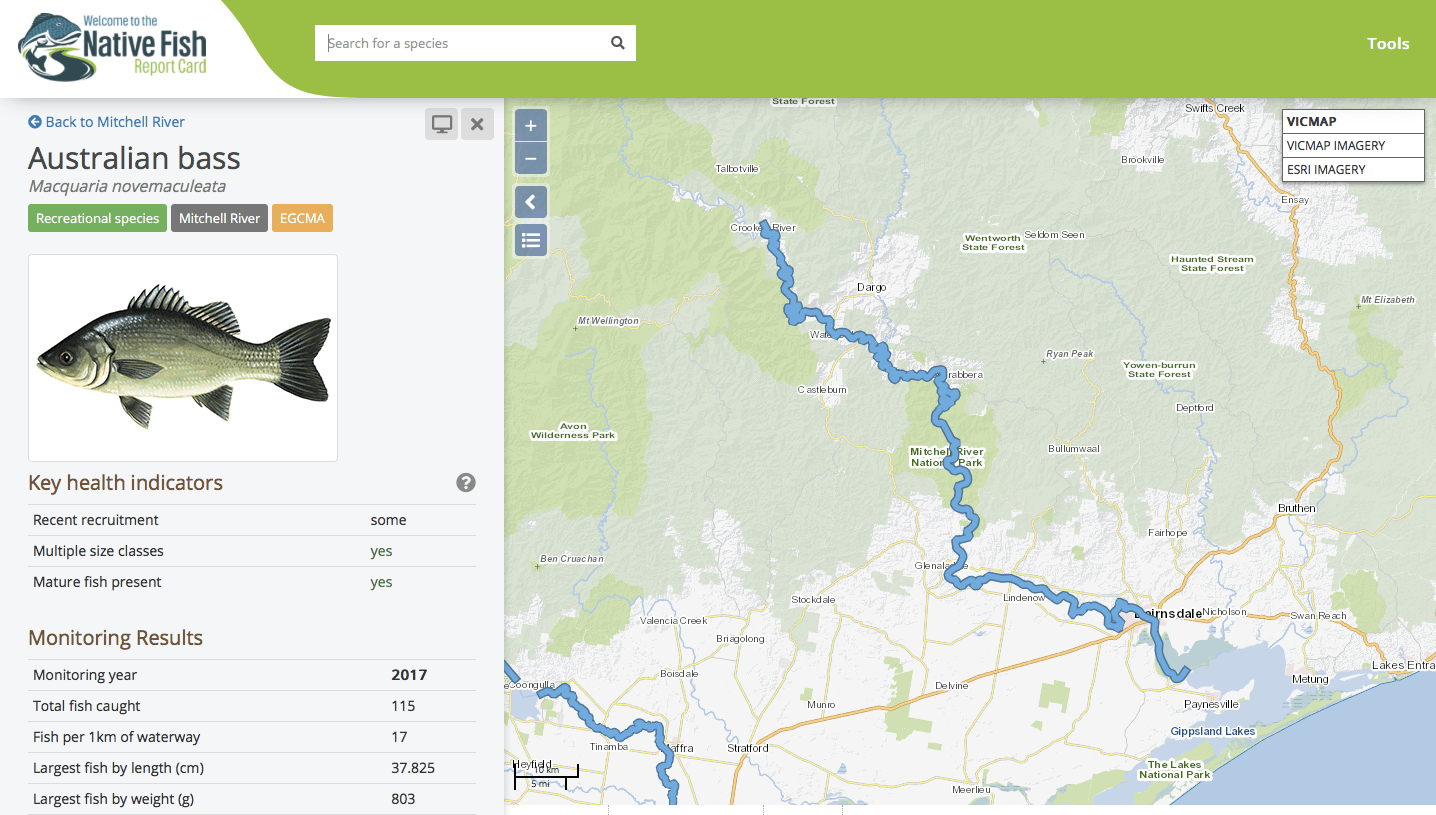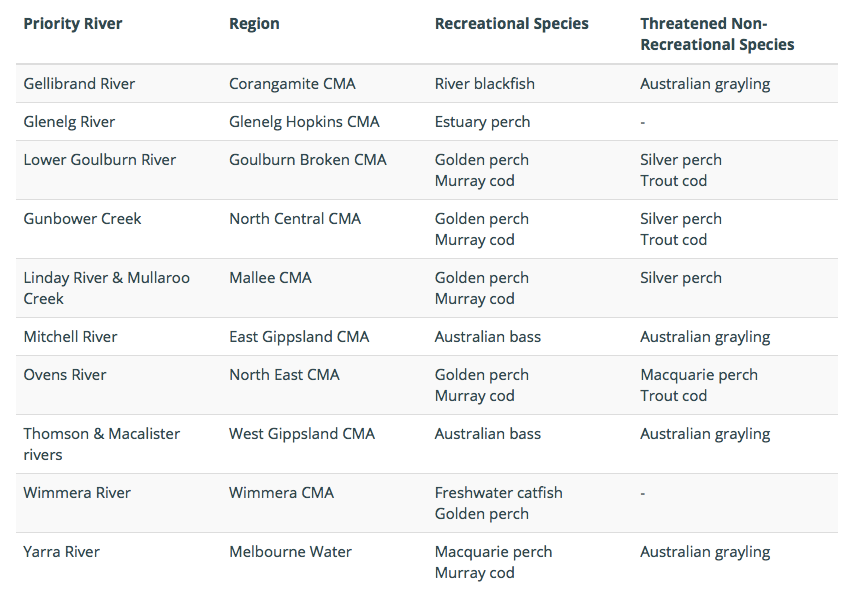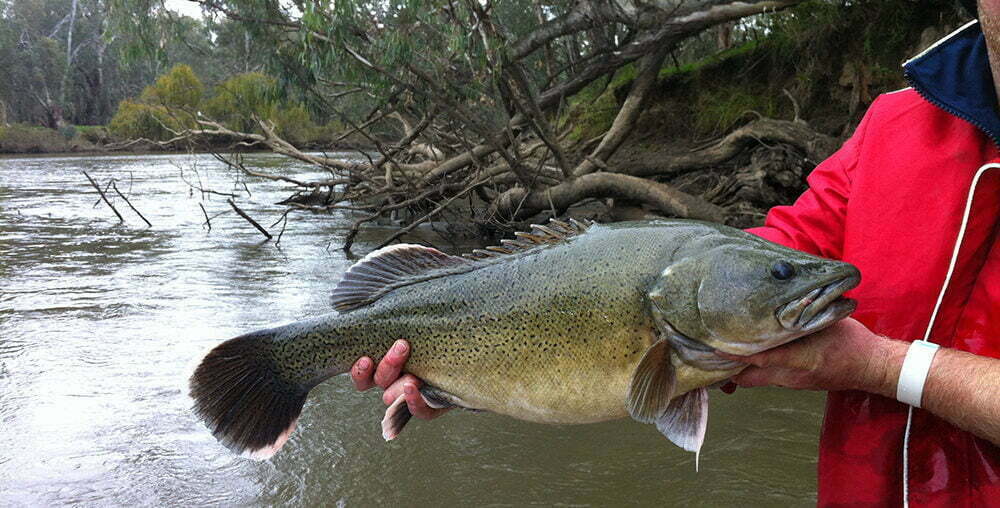The Native Fish Report Card Program is an initiative that presents data about the health of native fish (both recreational and non-recreational) in a clear report card format that is easy for recreational fishers, waterway managers and others to use.
What are Native Fish Report Cards?
The Native Fish Report Cards are brief overviews of the health of targeted fish species. They report on recent fish data collected through scientific surveys. Data has been collected annually since 2017, using electrofishing and fyke netting methods. The results of the surveys are summarised with three Key Health Indicators:
- Recent recruitment: Were small fish present indicating fish are breeding?
- Multiple size classes: Were there fish from a variety of sizes present?
- Mature fish present: Were mature fish (capable of reproduction) caught?
How to use the Native Fish Report Cards
The Native Fish Report cards are available as pdfs, or in an interactive map that allows users to discover more about the health of particular waterways and fish found in those waterways. Head over to the website now to find out more about the native fish in your local area!
You can use the map portal to navigate between different waterways and navigate between tiles that appear on the left hand side to find out more about the target species and their key health indicators. [Update 20 July 2022 – map no longer available, see current page]

About the program
The Native Fish Report Card Program is the first time that scientific fish population surveys have been used to produce report cards on important recreational and non-recreational native freshwater fish in Victoria. The Native Fish Report Card Program is a partnership between the Department of Environment, Land, Water and Planning (DELWP) and the Victorian Fisheries Authority (VFA) and Recreational Fishing License Holders (through Recreational Fishing License Trust Recreational Fishing Grants Program). The Native Fish Report Card Program will initially provide $600,000 over three years to regularly inform anglers and communities of the results of scientific fish surveys. The program will start by monitoring targeted recreational and threatened non-recreational species at 10 priority rivers. These priority rivers were selected in collaboration with catchment management authorities (CMAs), scientists and expert recreational fishers. Each of the priority rivers and the target species for each river is listed below.




